How to Plan a Trip to Barcelona
This Spanish metropolitan hub has so much up stuffed up its’ sleeve that it’ll satisfy just about everyone. Here’s How to Plan a Trip to Barcelona, Spain.
Once a dominant city of the renowned Roman Empire, Barcelona has a rich history to fulfil the desires of all those voracious culture vultures out there.
As one of the most popular destinations in Europe, tens of millions of tourists flock to see the iconic architecture and modernist masterpieces of world-renowned Catalan Antoni Gaudí.
Barcelona is a city of late-night dinners, afternoon siestas, fuming football fanatics and some seriously killer cuisine.
After spending five years living here, it’s safe to say I know this city like the back of my butt; or is it hand? Irrelevant.
This city feels just like home. And well, mi casa es su casa. So, let’s get this fiesta started!
8-Step Planning Checklist
Before you can take the full plunge, work your way through these eight simple steps. Whether you’re planning for the summer, spring, winter or autumn, planning a trip to Barcelona couldn’t be easier! Follow this checklist to begin the adventure of a lifetime!
Step 1: Determine the Destination Country & Cities
Step 2: Decide on the Trip Duration
Step 3: Figure out When is the Best Time to Visit
Step 4: Create a Travel Budget
Step 5: Book Your Accommodation (preferably 3 to 4 months in advance)
Step 6: Research & Organise Transport & Activities
Step 7: Get Your Documents in Order (Visa, Passport & Travel Insurance)
Step 8: Nail the Process with this Packing List
Best Time to Visit Barcelona
With a Mediterranean climate, Spain boasts a pleasant atmosphere year-round. Barcelona enjoys mild autumn, winter and spring seasons, making it an attractive tourist destination for many travellers. The high season kicks off between June and September. During this period, you can expect high prices on accommodation, flights and activities and bigger crowds.
The winter season in Barcelona is relatively mild and with fewer tourists, it’s an ideal time to get a more authentic experience. Every winter, there are almost always a few rays of sunshine guaranteed. Winters here are nowhere near as brutal as winter in Eastern Europe.
If you want to plan a trip to Barcelona, the spring (March to May) and autumn (September to November) season is the best time to visit.
Language
Boasting Catalan culture and tradition, Barcelona flaunts its very own official language, Catalan. It’s pretty easy to get by with English. However, basic Spanish (Castellano) is widely appreciated. Side note: Catalan will get score some serious points with the locals.
Best Things to Do in Barcelona
If you’re wondering how to plan a trip to Spain, you might think, ‘Madrid or Barcelona’? After over half a decade living in this east coast enclave, I can assure you that Barcelona is the better choice. Catalonia’s capital is crowned with a collection of things to do, so let’s see what’s on offer!
La Sagrada Familia
If you want to plan a trip to Barcelona, the Sagrada Familia is a bucket list experience. Without a doubt, this UNESCO World Heritage Site is one for the books.
You’ll be blown away by Gaudí’s Modernist architecture that depicts man, nature and religion. Most days, I go well and truly out of my way just to pass this awe-worthy basilica.
It’s been in construction for over a century, meaning that once it’s completed, it will have taken longer to build than the Great Egyptian Pyramids. How wild is that?!
Antoni Gaudi, a devout Catholic and proud Catalan spent ten years working on and developing this project.
Upon completion, there will be 18 towers. Twelve represent the Apostles, 4 for the Evangelists, one for the Virgin Mary and the highest for Jesus Christ.
I’d recommend booking the audio guide so that you can learn about the rich history of this monument and to help understand the intention behind Gaudí’s intricate, innovative design.
Try to visit early morning to see the sheer magic of the sun shining through the stained-glass windows. A spectacle indeed. Admission is €15 online and €18 at the door.
Right opposite La Sagrada Familia is the Plaça de Gaudí, a little park with a pond, luscious towering trees, and exceptional views of the basilica. This is a great little spot to have a quick snack. Attack of the snacks!! Please be mindful and take your rubbish with you; let’s work together, people!
Sant Pau Art Nouveau Site
If you want to know how to plan a trip to Spain, you should know that there are many Gaudi attractions in Barcelona. Rightfully so, these spots reel in millions of tourists every year. If you’re a fan of Gaudí but don’t want to brave the swarms of tourists, then this bad boy is for you. As one of Europe’s original art-nouveau sites, this twentieth-century Modernist complex features jaw-dropping domes, mosaics, sophisticated sculptures and stained-glass windows.
The pavilions are surrounded by gardens and connected by underground passageways. Admission is €14 for a self-guided visit or €19 for a guided tour. During the summer, there are live music events; check out the details here.
Bunkers del Carmel: ‘Turó de la Rovira’
Not many cities worldwide, let alone in Europe, offer unrestricted views of a major city, so let’s give a big Gracias to España for this one. Bunkers provides some of the best 360° views of the city.
For all my history freaks out there, this part goes out to you. This site was a former anti-aircraft bunker from the Spanish Civil War that housed up to 3000 civilians.
There are panoramic vistas of the Sagrada Familia, the Hotel W, Montjüic and, of course, the Mediterranean Sea.
Bunkers is a killer spot for your sunrise or sunset. If you’re down to chillax to the max, this is where it’s at. Bask in all of Barcelona’s glory as you watch the sun depart for the day.
Local Tip: I’d recommend setting out on a sunrise mission if you seek serenity. Arrive here before 6:30 am and watch the sky be painted an alluring array of gold, pink and yellow tones. Sunsets at this spot are downright spectacular, but you must be prepared to share the views with others.
For the perfect combo, bring along a few beers & some munchies. If you sweat a lot, keep in mind that the hike up to Bunkers is a sweaty one. Maybe bring along a sweat towel or something to dry yourself with.
If you want info on all things Gaudí, including exclusive tickets, check out my detailed guide to Gaudí’s Best Attractions.
Parc Güell
Get ya Gaudí on! Constructed in the early twentieth century, this 45-acre garden complex is indisputably a must-see. If you want to plan a trip to Barcelona for the first time, Parc Guell is a quintessential experience. This Utopian urban park ingeniously integrates elements of Catalan nationalism, ancient poetry and mysticism and is inspired by nature.
As one of the most emblematic places in Barcelona, this UNESCO World Heritage Site is the perfect opportunity to immerse yourself in the mind of the notorious Antoni Gaudí.
There are many elaborate things to discover. Check out the mosaic-covered Serpentine Bench, Plaça de la Natura, the Pink Tower, Casa Larrard, La Casa Trias, and La Escalera Monumental. You’ll want to photograph every last detail!
Parc Güell is best enjoyed in the early mornings when the sun is rising, and it is almost dead silent with just the sounds of local birds chirping. The flocks of tourists arrive from 9 am onwards. Beware. Tickets are €8,50, or €7,50 if you book online.
Travel Tip: It’s more than possible to access most areas of the park without spending a single cent. Arrive before 8 am for free entrance! It is also unguarded after 7 pm. However, it is quite dark then.
For those on a budget, avoid buying your food from the overpriced stores in Parc Güell. Instead, bring a bocadillo to enjoy in one of the shaded seated areas in the park. Please dispose of your rubbish mindfully!
Montjüic
This gem of the Catalan Capital offers an array of attractions for all ages.
Montjüic also has countless museums, luscious gardens, fountains, elegant sculptures and city views. The castle itself is beyond astounding.
The first time I laid eyes on this pure beast was during the summer of 2018. My best friend and I sat in absolute awe as we enjoyed local live street music, drank cubatas (rum, coca cola + lime), and basked in the last rays of the Mediterranean sun as we watched the sun depart for the day. The image of the gleaming castle has not left my mind since!
Built in the 18th century as a fortress, the Castell de Montjuic is now a museum with military displays and historical information. Admission is €5 and is free Sundays after 3 pm (only on the first Sunday of every month).
Make the time and check out the Gardens of the Grec Theatre, where there’s an amphitheatre carved into a hillside!
Located at the foot of the Royal Palace, there’s a series of Magic Fountain shows throughout the night-time. And it’s precisely what it sounds like. A synchronisation of 3620 water jets with light and music. Yowza.
Catch the cable car from La Barceloneta to Montjüic. The aerial tramway stretches over 1,450m. It’s only a 10-minute trip and offers excellent views over Barcelona. A one-way ticket costs €11, and a round-trip ticket costs €16,50.
Fancy a late-night activity?
Between June and August, the Sala Montjuic Open-Air Cinema shows international films. The movies are projected in the courtyard of the castle, usually beginning around 10 pm. This activity is going to cost you. However, there’s no stopping those daredevils willing to watch from the bushes... Just joking. Here are the admission fees:
Adults: €6,50
Children (6-12yrs): €4,00
Children (under 12): Free of charge
Chair rentals: €3,00
Eco-Picnics (including a drink, burger and fries): €11,00
El Tibidabo and the Temple Expiatori del Sagrat Cor
Want to witness Catalonia in all its glory? This is one of my all-time favourites here! El Tibidabo is a must-see if you’re planning a trip to Barcelona. Surrounded by the sights of picturesque mountains and accompanied by Europe’s third-oldest theme park, this combination will leave you speechless. But it just gets better.
Located in the Serra de Collserola, at the summit of Mount Tibidabo, right next to the nineteenth-century theme park, is the Temple of the Sacred Heart of Jesus. There are a lot of churches in Europe alone, but this one is well worth your time. There is a giant statue of Jesus on top, which at first sight, resembles that of Rio de Janeiro. You’ll want to spend your entire day here.
Finding your way up to Tibidabo is quite the mission, but man, is it worth it! Entry to the Basilica is free. However, if you want to go up the lift, there is a charge of €3,00.
The amusement park is open on the weekends, except in the winter. Admission is €28.50 and includes all rides, attractions and shows within the Amusement Park. There are discounted prices available for children and seniors.
Parc de la Ciutadella
Say Si, señor to Barcelona’s largest urban park. This is one of my all-time picks for the whole BCN experience, and it doesn’t require a single cent. The park is filled with a diverse array of people, African drummers, artists, joggers, local DJs and aspiring acrobats practising their tricks on the grass, others alike all huddle in this hotspot to soak up in the European sun. This park suits just about everybody.
If you’re planning a trip to Barcelona, visiting the Parc de la Ciutadella is perfect for breaking up all the sightseeing. Sure, Barcelona's architecture, art and activities are astounding, but it can feel a bit repetitive if you don’t mix things up. Along with the giant waterfall, the Castle of the 3 Dragons, the Catalan Parliament and the Umbracle, there’s also the opportunity to immerse yourself in luscious greenery and row a boat in the lake.
Pricing is relatively cheap; 30min for 2 people = €6; 3 people = €9; 4-5 people = €10.
So why is this park such a hit? During the summer, the city council puts on Musica als Parcs, a series of free music concerts, usually including jazz, classical or gospel. They are generally between 8 pm and 9 pm, but times vary, so be sure to check out their FB page.
Arc de Triumph
One of the city’s most iconic landmarks, the Arc de Triomf, is just a short walk away. The Arc de Triomf was built in 1888 for the Universal Exhibition; it features ground-breaking sculptural symbolism.
During the day, this space is filled with performers, local vendors and grown-ass men blowing some big-ass bubbles. As strange as that sounds, you can’t miss it. This area comes to life at night as local street artists jam and gatherings flourish under the lights.
The Arc de Triomf is that good; I used to go out of my way to ride my bike through here every day. Back in 2019, I crashed my bicycle into the Arc de Triomphe. I swear I broke my rib that day but cycled off as fast as possible. The shame!
Sometimes I would stop for an impromptu photoshoot to send to my grandma. Yes, you read that correctly. My 76-year-old grandma froths the Arco de Triunfo.
La Rambla and the Gothic Quarter
Consider yourself a culture vulture? Somewhat considered a quintessential BCN experience, La Rambla is lined with trees and offers a 1.2km stretch of walking distance to moonwalk your life away. This goes without saying; a walk in the early morning is best.
Hot Tip: Head to La Rambla during the early morning and steer clear of the afternoon. Have your belongings close to you, and beware of pickpockets.
One week after my new apartment was robbed, I ‘lost’ my phone in the Rambla, so, as you do, I sat myself down on a bench to have a good, old-fashioned mental breakdown and pour my eyes out. Soon after, the thieves reproached me and gave me back my mobile. I got lucky! Don’t expect this as a norm here because it’s certainly not. My (near) loss is your gain.
La Rambla forms a boundary between El Raval and the Barri Gòtic, known as The Gothic Quarter. The Gothic Quarter, the city’s historic centre, is notorious for its medieval, cobblestone streets, with many of the most famous sights being free to discover. Flaunting its gothic charm, the alleyways of the Barri Gòtic are filled with popular bars, quirky shops, Artisanal stores and a multitude of trendy plaças.
If you plan a trip to Barcelona, you’re probably fixed on a tapas-induced food coma. Dabble in the delights of classic Catalan dishes and soak up all the ambience in Plaça Reial, an ambient square lined with trendy cafes and buzzing restaurants.
This is one of Barcelona’s best places to eat tapas, especially if you want a good view. While it may not be the most budget-friendly spot, it is worth the money.
Order some patatas bravas and drink cava (sparkling wine). Don’t forget to check out Gaudi’s first commissioned piece for the city: the lamp posts with coiled dragon-headed serpents.
Close by in El Born is La Catedral de Barcelona. Built in the 13th-15th centuries, it features neo-gothic architecture with massive spires, colourful stained-glass windows and extraordinary domed ceilings.
If you’ve ever been to Milan, you will be stunned by the striking resemblance between the Milan Cathedral and this one here in Barcelona.
Outside, there’s a courtyard filled with gargoyles, mythical creatures, palm trees and orange trees. There are also resident swans in the yard. It remains an unsolved mystery as to how and why they are there. Random.
But, entrance to the cathedral is free if you visit in the morning! Monday – Saturday between 8:30 am & 12:30 pm, to be exact. Admission is €7 every other time, and you must pay €3 to go up to the terrace.
Barcelona is jam-packed with medieval churches. Other noteworthy churches and basilicas are the Basilica of Santa Maria del Mar, Cathedral of Saint Eulalia and the Holy Cross, Basilica of Sant Just i Pastor, Basilica of Santa Maria del Pi, Pedralbes Monastery and Chapel Agata.
Casa Batlló
Restored by Gaudí in the 1900s, Casa Batlló is famous for its undulating, dragon-esque shape and colourful, eye-catching design. Casa Battló looks captivating in the morning light when the sun shimmers against the scale-like tiles on the roof.
The Art Nouveau style heavily influenced this UNESCO Heritage Listed Mansion. It is embellished with mosaics made from broken ceramic tiles, and the roof is arched and likened to a dragon. If you appreciate live jazz, blues, pop or funk music, Casa Battló puts on a sell-out series of live concerts called the Magic Nights.
This, right here, is the perfect summer evening experience; the warm Mediterranean breeze and a sneaky bev, or four. To avoid queuing up for hours or missing out, it’s best to book in advance.
La Pedrera (La Casa Milá)
Built from 1906 to 1912, ‘The Stone Quarry’ was designed to evoke the sense of a snowy mountain. It features epic interiors, undulating forms and cool chimneys. It was the last private residence designed by Gaudí, and nowadays, only a few tenants still live here. Admission is €22 online and €25 at the door.
At night, a tour of the premises and a magnificent audio-visual show are projected on the mansion’s Modernist rooftop. It’s called La Pedrera: The Origins Show, which includes a glass of cava (sparkling Catalan champagne) and various snacks to nibble on.
On the 23rd of April, the day of Sant Jordí (the Catalan version of Valentine’s Day), La Pedrera opens its doors for free. My Argentinian teacher and I ditched the end of our Spanish class to visit and learn about the social, cultural and environmental projects of the Fundació Catalunya. Oh, happy days!
Parc del Forum
Located in the neighbourhood of Diagonal Mar, the Parc del Fòrum sits on the cusp of the Mediterranean waterfront and combines a series of modern, contemporary buildings and architectural monuments.
The space is primarily used for events like Primavera Sound or DGTL.
But, even when no festival or major event is going on, the Parc del Fòrum is a bucket list item for Barcelona if you can appreciate architecture and design.
The entire space of the Parc del Fòrum is inspiring if you’re a creative or a lover of the arts. The varying styles of design, in combination with the Mediterranean character of the city, is definitely an unforgettable experience.
My best advice is to drag yourself out of bed nice and early to catch a sunrise at this spot overlooking the Port Fòrum. With hardly any people around apart from the stray jogger or cyclist, the sun rises perfectly above the water and lights up the space.
This is 100% the best time to visit this area, but if you’re not an early bird, your next best bet is a sunset mission. The warm tones and vibrant colours that pop during this time of the day make the Fòrum well and truly worth a visit.
Torre Glóries
If you’re seeking something a little different, then look no further. The Torre Glòries is a giant 38-story tower that marks the gateway the BCN’s technological district. It was only built in 2003, so it’s a modern building in comparison to the heart of the city. It’s quite an amusing spectacle; to put it to you shortly, it looks like a giant penis. Straight up. Oh yeah, it gets lit up at night…
Palau de la Música Catalana
Located in El Born is the Modernist concert hall of the Palau de la Música Catalana. It is designed in the early twentieth century and features intricate details and vivid mosaics. It’s a fully functioning music venue, so immerse yourself in the whole experience and book a ticket!
Museu de Picasso
Get cultured at Picasso’s Museum. Learn about one of the world’s most famous artists across five contiguous medieval stone mansions with more than 4000 pieces of art. Admission is €11, with discounted prices for students and seniors. Local Tip: Thursday evenings from 6-9 pm, the first Sunday of every month is free.
Barcelona History Museum (MUHBA)
Stretching over 4000 m2, the archaeological area under Plaça del Rei showcases extensive Roman ruins and reveals many details about daily life in Barcino. It features a mosaic with geometrical motifs from a domus of Barcino dating back to the 4th century AD.
Museu d’Art Contemporani de Barcelona
Exuding more than 5,000 pieces of art, this museum has an impressive collection of Spanish artists, from Pablo Picasso to Joan Miró. Also, it features international artists such as Andy Warhol and Alexander Calder. Admission is €10 with discounts available.
Travel Tip: Free Saturdays from 4-8 pm.
At night, the space outside comes to life with local skaters and groups gathering. It’s a sick spot to chill out, soak up the atmosphere, enjoy the laid-back vibes and drink a few beers. Be sure to watch your bags and surroundings!
Feeling unsatisfied? Check out the Museu Nacional d’Art de Catalunya, the CosmoCaixa Museum, the Maritime Museum, the Natural History Museum (Museu Blau) and my absolute favourite, only because I’m a sweet-feen, is the Chocolate Museum (which is free on the first Monday of every month).
Beaches in Barcelona
Catalonia has some seriously spectacular beaches on offer. Amongst tourists, the most popular is La Barceloneta. If you’re brave enough to battle the crowds, then this is your most straightforward option.
The beachfront is packed with your typical Spanish chiringuitos (beach bars) that are stocked up on plenty of cerveza and vino.
If you want to let all of your junk hang out ye ol’ trunk, check out the beaches in Marbella or the southern stretch of San Sebastian.
This is your typical European summer; the salty ocean, the scorching Mediterranean sunshine, intense beach volleyball matches, music to get ya groove on and, of course, random men selling dirt-cheap beers from mysterious plastic bags. Ladies, don’t forget, this is Spain; you can get your titties out! ¡Viva España!
Hot tip: Avoid purchasing cheap mojitos from those ‘ambitious entrepreneurs’; they are neither made nor stored in the most sanitary of conditions.
Travel Tip: Watch your valuables when you jump in for a swim; you never know when a carterista is lurking on the d’ low.
If you want to go the extra mile, pay for a train ticket and get to Tarragona. This is one of my favourite beaches, and it’s where I continuously spend my birthday, year after year. Tarragona has an influx of trendy restaurants and bars, impressive Roman ruins, and an amphitheatre located right next to the beach.
If you plan a trip to Barcelona, consider adding nearby beaches to your itinerary: Sitges, Girona, Lloret de Mar and Tossa de Mar.
Markets in Barcelona
If you’re thinking about how to plan a trip to Barcelona, adding the markets into your itinerary can help to break up all the sightseeing. With nearly 40 markets throughout the city, fresh produce is abundant for locals and tourists alike.
Mercat de la Boqueria is by far the most popular. As the most significant food market in Europe, there’s an eclectic display of fresh fruits, vegetables, and seafood, along with tropical juices, scrumptious sweets and your typical Spanish jamón ibérico and jamón serrano.
For something less frantic, try Mercat de Santa Caterina, the Mercat de la Lliberat in Gràcia or the Mercat dels Encants, where you will find an intriguing mix of trash and treasure.
Now, if you’re anything like me, a true vintage-feen, don’t miss the Barcelona Vintage Market in the Estación de Francia. It’s usually held in May from the 9th to the 10th. Prepare yourself for some pumpin’ beats, copious amounts of Estrella Damm, and an infinite supply of quality vintage jackets, overalls, jeans, tops and oh so much more! And to top it off, it’s dirt cheap. The prices are downright incomparable if you come from a country like Australia or England. Praise be to the vintage gods!
On a strict budget? Barcelona is home to an eclectic array of opportunities awaiting you; better yet, they’re fit for your budget too. Just because you’re watching your pennies doesn’t mean you have to miss out; these Catalonian cobblestone streets have so much on offer. Check out this post on Barcelona Budget Travel.
Festivals in Barcelona
One of the best things about living in Barcelona is that there is always some sort of free cultural event, public holiday or fiesta going down. Whether jazz in the park or poetry slam in the style of 22 Jump Street, this city has something to tickle everybody’s pickle.
My all-time fave, the Fiesta de San Juan, celebrates the summer solstice on the 23rd of June. Catalunya knows how to throw a good beach party, and this is among the best of the best. The beachfront gets lit up with bonfires and free-for-all firework displays. The local chiringuitos (beach bars) go off. So far off-the-charts, you’ll want to stay ’til dawn.
Another whopper BCN celebration is the Fiesta de la Mercè, which is celebrated on the 24th of September for five days straight. There are free, live concerts with music and lots of dancing, copious firework displays, acrobatics and the world-renowned, lively correfocs (colourful parades of drums, devils and firecrackers).
If you’re due to visit from the 15th to the 21st of August, head to the Fiesta Mayor de Gràcia, which includes free outdoor concerts with live music. This one’s a little different than your typical Spanish street fiesta. Personally, the major highlight is the competition between each street for the most creative decorations.
More importantly, all of the materials sourced are recycled! Give me a high five, mother nature.
Camp Nou Stadium and BCN Football Team
If you’re wondering how to plan a trip to Barcelona, visiting the largest football stadium in Europe should be in order. Barcelona’s two teams are RCD Espanyol and FC Barcelona, so aim to watch a soccer match where one of the two is playing. Just how Aussies froth over the AFL, the locals are absolute fanatics over this sport. If you can't catch a game, you can tour the stadium and the FCB (or Barça) Museum.
Tour admission is €26 online or €29.50 at the door. Match tickets are from €29, depending on the opponent. Classic matches almost always have a higher price tag, so book early so you don’t miss out!
Poble Espanyol
Poble Espanyol is an open-air architectural museum built in 1929 to resemble the traditional villages. It incorporates typical Spanish architecture and art in one single space. This activity is ideal for families and travellers who are interested in learning about architecture and history.
Flamenco in Barcelona
There’s an influx of venues. However, the majority are just tourist traps. I’d recommend two venues. Los Tarontos or Palau Dalmases. Los Tarontos is Barcelona’s oldest flamenco venue, and admission is relatively cheap, costing around €15. Palau Dalmases has excellent decor and architecture. Access is €25 with a free drink included.
If you’re planning a trip to Spain, you can see authentic flamenco in the Andalusian region. Destinations like Granada and Seville boast locally-run experiences with professionals.
Parc del Laberint D’Horta
A well-landscaped half-maze half-park that serves as a great urban escape from the hustle and bustle of the city.
Parc del Laberint D’Horta features a 14th-century house, a waterfall, and a giant maze. If you plan a trip to Barcelona, this is a perfect fit for families. Admission is only €2,50 and free on Wednesdays and Sundays.
No room to budge your budget? Check out this comprehensive guide on the Best Free Things to do in Barcelona.
Best Activities in Barcelona
If you’re on the hunt for the top-rated attractions in Barcelona, look no further. Here is the best of what Catalonia’s capital has to offer:
Day Trips from Barcelona
Tarragona
Located just a 45-minute train ride from the heart of Barcelona, Tarragona is a coastal city harbouring a handful of ancient Roman ruins. From the colossal-sized Amfiteatre de Tarragona perched on the cusp of the Mediterranean to the medieval Old Town and Cathedral, Tarragona is jam-packed with history and millennia-old remains.
Check out the Circ Romà, the Ferreres Aqueduct, La Rambla Nova, El Museo Diocesano de Tarragona and Casa Navás. Head down to Cala Fonda, Cala Romana, Platja de l’Arrabassada and Llarga Beach for some seriously blue-ass water and Spanish sunshine.
Whether you’re a self-proclaimed beach bum, a culture vulture, or a history nut, this vibrant city has everything to satisfy your needs—head over to this post on the Best Things to do in Tarragona.
Catalan Pyrenees
The Catalan Pyrenées harbours a handful of hiking trails, cycling paths, ancient volcanoes, centuries-old towns, and luxury ski resorts. This region is the perfect fit for those seeking a slice of nature. With a vast, mountainous landscape, this rural utopia even offers few activities.
There are hot air balloon rides, intriguing museums, Medieval churches, and live festivals year-round. Don’t miss Sant Climent de Taüll and Aigüestortes i Estany of Saint Maurici National Park. There are even wheelchair-friendly tracks, which are also suitable for families with children. This national park is fringed with plentiful, off-the-grid routes that are enough to satisfy even the most avid of hikers.
From Barcelona’s city centre, head to one of the two main train stations, either Plaça Catalunya or Sants-Estacio. You can purchase your bus ticket from the main ticket boxes for around €20-30,00 one-way. The train will arrive in the Pyrenées after about 5 hours. I’d recommend you catch an overnight bus. This way, you can sleep the night before and kick it off immediately when you arrive in the morning.
Top Tip: Check out ALSA’s bus schedule and tickets online before embarking on your journey. Sometimes you can get cheaper tickets by booking online in advance!
Montserrat
This rugged region boasts sublime sights of unique rocky pillars and the quaint, Catalonian countryside. From the Benedictine Abbey and the scenic hikes to the Santa Cova and the history-filled museum, Montserrat has many things to do. Want to mix it up? They offer a Montserrat Wine Tour, where you can visit the mountain and abbey and pair it with a local wine tasting in a tenth-century castle. Pretty nifty if you ask me.
If you want to sprinkle in a bit of old-fashioned physical activity into your holiday, then Montserrat will have what you need in store. Straddled by sharp rocks and capped with column-like crests, the monumental Montserrat Abbey sits perched well and truly on the cliff’s edge. This stunning region encompasses a vast array of hiking opportunities around the natural park. Have a look at this post on the Best Hikes in Montserrat.
Suppose you’re wondering how to plan a trip to Barcelona, one of the best things to do on a day trip. Sure, the city is a bucket list experience in itself, but there’s plenty to offer in the outskirts. For the full scoop, see this post on the Best Day Trips from Barcelona.
Where to Eat and Drink in Barcelona
The city’s culinary culture is the crown of an authentic BCN experience. Check out this curated guide for a taste of Barcelona’s best of the best.
From tapas-based bistros to alcohol-infused bars and classic Catalan restaurants, there’s a lil’ something to satisfy self-proclaimed foodies and gastronomy-intrigued visitors alike.
First-timers, don’t be deceived by the tourist traps on Las Ramblas; this food-centric city offers much more than just your typical Spanish paella. For a tapas-infused street, head to lesser-frequented Calle Blai.
Barcelona’s gastronomy scene is threaded with a combination of cultures. Principally sparking the Mediterranean palate, the dishes are predominate in olive oil, fresh vegetables, fish and meat.
The local eating time differs a hell of a lot in comparison to other European countries. Lunch is usually around 2 pm, and dinner is at 10 pm.
What better way to perfect your favourite local dish? I’d highly recommend a cooking class or food tour where you can learn about traditional Catalan cooking. There are plenty of local chefs offering cooking classes, as well as commercial companies. Keep an eye out for:
BcnKITCHEN (bcnkitchen.com) approx. €50
Just Royal BCN (justroyalbcn.com) approx. €77
Devour (devourbarcelonafoodtours.com) approx. €69
For the complete, foodie run-down of local hot spots, tapas bars, restaurants, best brunch and cafes, and much more, check out this Food Guide to Barcelona.
Now people, let’s not forget this is the city that sells beer for the same price as water. If you’re a beer fanatic, you cannot leave BCN without trying Estrella Damm, Voll Damm, Xibeca, Estrella Galicia, Moritz, San Miguel or Amstel. My personal choice? Estrella Damm. The name even has Damm in it, and it’s damn sexy.
Time to kiss your hardcore abs goodbye and embrace the beer gut. You can typically get a pint for around €3,50. This is a whopper comparison to a country like Australia, where the price of a pint goes around $10.00. Barcelona, you bloody beauty.
If you’re not really into the whole beer scene, try out a classic Catalan vermut rojo (which pairs perfectly with an olive and a slice of orange. If they don’t serve it to you, simply ask, ‘Vermut rojo con una rodaja de naranja y una aceituna, por favour), or a classic Cava (sparkling wine). Chupitos are always a good idea, too!
If you’re a sweet freak, I’d highly suggest you hit up two of my favourite hot spots here in Barcelona. For the best doughnuts, head to Boldú. For the tastiest monster cookies, don’t miss Cookona. Do your tastebuds a favour!
Coffee culture has finally hit Barcelona; gracias a Dios! If you’re on the hunt for a perfectly brewed pick-me-up, luckily for all you coffee lovers, I’ve got you covered. After seriously struggling to find a café that takes coffee seriously, here you have it, folks: A comprehensive compilation of the sexiest coffee the Catalan capital has to offer. Check out some of the Best Coffee Spots in Barcelona. Perfect for all self-proclaimed coffee fanatics.
Where to Stay in Barcelona
Ciutat Vella (Barri Gòtic)
Barri Gotic is the beating heart of historic Barcelona and is illustrated with labyrinth-like streets, medieval architecture and a lively ambience. Ciutat Vella is typically known as Barri Gòtic in Catalan, Barrio Gotico in Castilian Spanish, or the Gothic Quarter in English. This vibrant neighbourhood in Barcelona has a mix of accommodations ranging from budget-friendly hostels to boutique hotels.
The Gothic Quarter is one of the best places to stay in Barcelona, especially for those seeking a charming and historic atmosphere. As the oldest part of the city, there’s a multitude of essential landmarks, attractions and activities right at your doorstep. From the ancient Roman ruins to renowned museums and la playa (the beach), the Ciutat Vella is also ideal for those who want to enjoy the dining and nightlife scene. With easy access to public transport, Barri Gotic is an excellent location for first-time visitors and solo travellers.
Gràcia
Boasting a bohemian and artistic atmosphere, Gràcia is a picture-perfect neighbourhood in Barcelona. Woven with vibrant streets, lively squares and a spirited local scene, this is one of the top places to stay for a local experience.
This hipster destination is popular among the younger crowds, local students and a thriving Catalan community. Gràcia delivers diverse accommodations, including guesthouses, apartment rentals and budget-friendly options. The neighbourhood in Barcelona is known for its animated festivals and cafe-lined terraces.
If you’re a devoted coffee enthusiast, you’ll want to go to this neighbourhood. See this in-depth guide on the Best Coffee in Barcelona for the full scoop.
Gracia is located in the city’s northern end, close to Parc Güell and Casa Vicens. Public transport functions regularly here, with bus and metro.
L’Eixample
L’Eixample is notorious for its grid-like layout, wide tree-lined avenues and stately modernist architecture. Home to renowned works of Antoni Gaudí like Casa Mila (La Pedrera) and Casa Batlló, this is one of the best places to stay in Barcelona for sightseeing. L’Eixample is known as the gay capital of the city, making it one of the most fun places to stay in Barcelona.
L’Eixample poses a blend of exclusive hotels, boutique accommodations and rental flats. This neighbourhood in Barcelona is well-connected to public transportation and flaunts an animated dining and shopping scene. Hit up shopping centres like El Corte Ingles, drink in the array of bars and dress up for the buzzing nightlife.
Montjüic
Montjüic is a nice open area with parks, fantastic city views perched from the top of the mountain, and close to the central train station (that travels interstate).
Barceloneta
Barceloneta is a lively seaside neighbourhood renowned for its seafood restaurants, oceanfront clubs and bustling beaches. This area to stay in Barcelona mixes a manifold of tapas, bars and cafes, making it an excellent choice for foodies. Situated close to Port Olympic, Barceloneta comes to life at night as it’s home to the city’s biggest tourist clubs.
Even if you don’t want to party it up, Barceloneta is a pleasant area to enjoy. Go for an early morning stroll by the beach, stop for a cafe in one of the beach bars and splash around in the water at Nova Icaria or Mar Bella. This neighbourhood in Barcelona is home to hotels, apartments, and budget accommodations. La Barceloneta only has one metro station, so keep that in mind, as it can get very crowded during peak times.
El Raval
Fusing trendy bars, budget-friendly restaurants and an array of art galleries. El Raval is a multicultural and diverse neighbourhood in Barcelona. In recent years, it has experienced a revival in various accommodations, including hotels and apartment rentals. El Raval is home to the vibrant La Boqueria market and the Contemporary Art Museum of Barcelona (MACBA), where famous skaters hang around.
El Raval is also my barrio! While it’s not the flashiest of neighbourhoods, it has my heart. If you’re planning a trip to Barcelona, El Raval may not be the standout option. Even though it’s rough around the edges and referred to as ‘the wrong side of the tracks’, it’s not as bad as they say.
El Raval has character, and some charm can be found underneath the dirt and rubbish. Lol. Centrally located, El Raval is known for its rowdy nightlife scene. This area in Barcelona offers excellent access to public transport, with three metro stops close by and multiple airport shuttle buses. This is one of the best places to stay in Barcelona for budget travellers.
Born/Ribera
Sandwiched next to the Gothic Quarter, El Born is a stylish and creative neighbourhood in Barcelona. Renowned for its narrow streets, trendy boutiques, art galleries and buzzing nightlife, this area offers a fascinating fusion of experiences. El Born also boasts some of the best vintage stores in Barcelona! This neighbourhood is a little more upmarket in comparison to the Gothic Quarter.
Home to hotels, hostels, guesthouses and apartment rentals, El Born, is one of the top places to stay in Barcelona. Plus, it hosts the famous Picasso Museum and the stunning Santa Maria del Mar church. This area to stay in Barcelona offers a variety of transport options and is only about a 20-minute walk to the beach.
Top Hotels in Barcelona:
€€: Cram Hotel
€€€: ME Barcelona
How to Get Around Barcelona
If you want to plan a trip to Barcelona, there are many different ways to get around. With an extensive public transport system topped by taxis, bicycles and good old-fashioned walking, you’ll be spoiled for choice. If you want to visit Barcelona, here’s everything you need to know.
Metro, Bus, Trams and FGC
The metro, tram, funicular, and FGC (Ferrocarrils de la Generalitat) are generally the quickest and most convenient ways of getting around Barcelona. With simple and affordable tickets and travel cards available, this is the best option for price and practicality. These networks connect the most prominent attractions with other hot spots situated further out of the city. The city’s bus network is ingrained with hybrid, electric and compressed gas vehicles, pinning it as one of Europe’s most environmentally-friendly options.
The following passes are valid for the metro, buses, tram and suburban rail:
Single ticket: 2,40 €
T-casual (10 journeys): 11,35 €
T-Familiar (8 journeys): 10 €
Day passes (2, 3, 4 and 5 days): Hola Barcelona Card
On Foot
So, can you get around Barcelona without a car? Travelling around this city has never been easier… These streets were made for walking! Whether you’re in the mood to strut it up or simply stroll around at your own pace, hopping from hidden gems to more prominent attractions by foot is a great way to explore. Experience the city like a local and get some fresh air!
Bicycle
Barcelona is a sound, cycle-friendly city, spanning a network of more than 200km worth of bicycle lanes, topped with specific traffic lights, signage, and expansive bicycle parking spaces. Getting around this sunny Spanish city on a bike can also be combined with public transport.
Taxi
Teeming with over 10,000 taxis, Barcelona harbours a wealth of hybrid and electric vehicles and is undoubtedly one of the best transport options for ease and comfort. In Barcelona, there is no Uber. Cabify is available, but the prices are more or less similar to taxis.
For the full scoop, check out this comprehensive guide on How to Get Around Barcelona.
Car, Motorbike or Scooter
Depending on your budget and preferences, renting a car, motorbike, or scooter could be the best option. Traffic conditions inside the city are notoriously challenging, with lots of congestion and limited parking spots. The best way to get around Barcelona is usually by scooter or motorbike, but a car would be ideal if you’re travelling long distances.
Barcelona Airport
Barcelona-El Prat Airport (BCN) is the primary international airport situated roughly 12 kilometres southwest of the city centre. If you’re wondering how to plan a trip to Barcelona, here’s everything you need to know about the airport.
Barcelona Airport serves multiple Spanish and international airlines and operates flights to places across Europe. Home to two terminals and a wide range of facilities and amenities, you’ll find everything from restaurants and bars to duty-free shops and currency exchange offices. Both terminals provide free Wi-Fi access throughout.
Here’s how you can get to/from the Barcelona Airport:
Train: The RENFE train service runs every 30 minutes to and from Barcelona, and the duration is roughly 25 minutes. It stops at Estació Sants, Passeig de Gràcia, El Clot and other destinations in Catalonia. The train station is located at Terminal 2, and there’s a free shuttle bus connecting T1 and T2.
Metro: Barcelona Airport operates on the L9 Sud metro line and offers a direct connection to the city centre. The metro station is found at Terminal 1.
Aerobus: The Aerobus (A1 and A2) is an express shuttle bus service that operates between the Barcelona Airport and the city centre. The major stops include Plaça Catalunya and Plaça Espanya. As a budget-friendly option, the Aerobus shuttles only cost €5,90 one way. If you’re sticking to a more frugal budget, catch the #46 bus (if it’s during the day) or the N16, N17 or N18 bus (during the night-time).
Taxis: Taxis are readily available outside the terminals and they operate on a metered fare system. The journey to the city centre takes approximately 20-30 minutes, depending on traffic conditions (and the driver!). In terms of comfort, convenience and timing, taxis are the best option. You can use the MyTaxi app or hail one directly outside the arrival terminal. If you’re taking a long-haul flight, I’d recommend a cab. The standard fare from the airport to the city centre is around 30-40€.
Car Rental: If you want to plan a trip to Barcelona, renting a car is ideal for exploring the surrounding areas. There are a handful of car rental companies with counters at the airport, but I’d recommend booking online and in advance to avoid long queues.
Barcelona Travel Tips
If you’re on a budget and want to plan a trip to Spain, you certainly don’t have to miss out. Save money with this guide on the Best Barcelona Sightseeing Passes.
Many people confuse La Sagrada Familia with La Catedral de Barcelona. It’s quite a common mistake, so be sure to know what you’re doing.
Beware of pickpockets in the metro and crowded places. They are actual pros here. La Rambla is a big one to watch out for.
When at a restaurant, don’t leave your phone on the table and don’t put your bag or purse on the spare seat.
Avoid supermarkets close to major tourist attractions, as the prices are significantly higher and crowded.
If you’re on a budget, most places in the city offer a Menu del dia, which often includes a three-course meal and either a beer or wine. Typically, it’s excellent value for money. Buy it for lunch, so then you won’t need to spend much more money for the rest of the day.
Barcelona offers free, city-wide Wi-Fi. Get connected and get around. You can find it at almost any point in the centre with a large W.
Opt for a T-10 card ticket for around €11,00. It can be used in the metro, trains, buses and trams.
Rent a bicycle; this city is great to see like this. I typically ride my bike wherever I can. Experience BCN like a local!
Avoid riding electric scooters on the footpath. Locals will show no mercy and rip into you as a toddler rips into a cake.
Try to avoid discussing politics here. It’s a tricky subject considering the independence movement. Take it from me; you don’t want to get into a sticky situation with the locals.
Opt for a cava or Vermouth instead of sangria.
If you’re heading to any of the major tourist attractions, arriving there as early as possible is best. The earlier you get in, the fewer people you’ll have to deal with. Book your tickets well in advance for everything so you can avoid lining up in those giant queues.
Whether you’re a fan of exploring the cobblestone alleyways, beautiful beaches, ancient ruins or off-the-radar adventure, I assure you that these spots will not disappoint. For the full scoop, check out The Ultimate Guide to Barcelona.
Be sure to add Barcelona as a destination to your Travel Bucket List. This comprehensive guide on How to Plan a Trip to Barcelona can kick the hassle out of your next getaway. So, what are you waiting for?

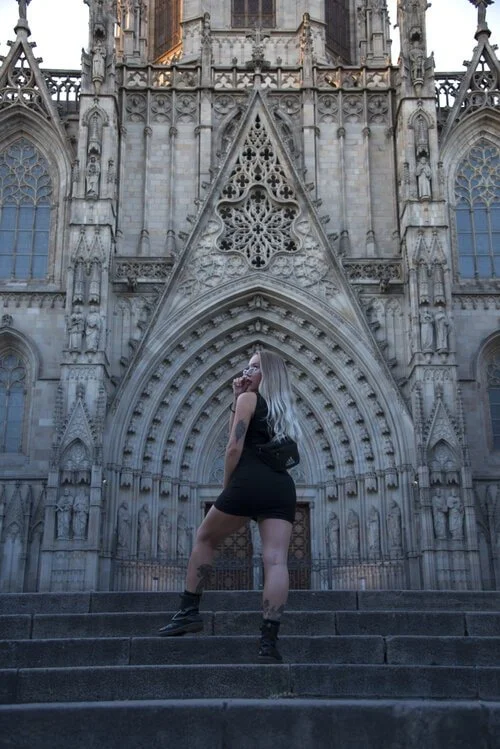
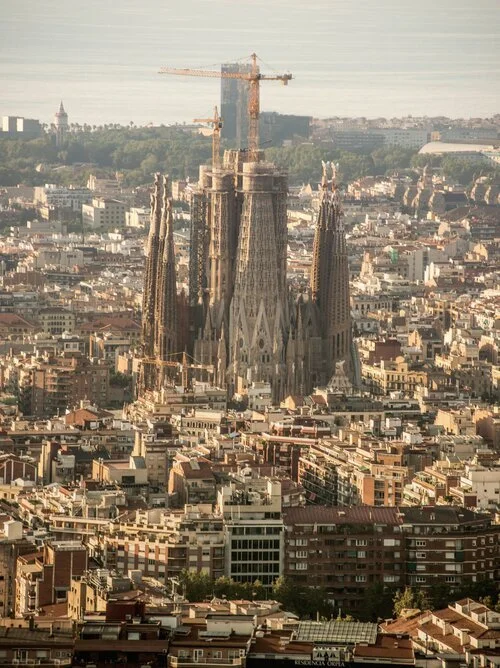
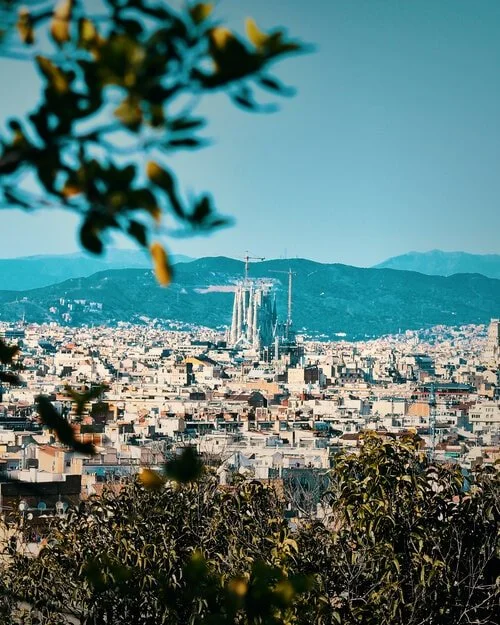
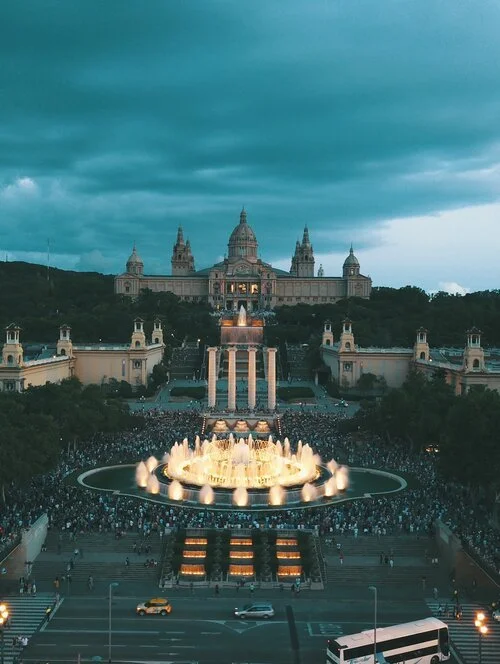
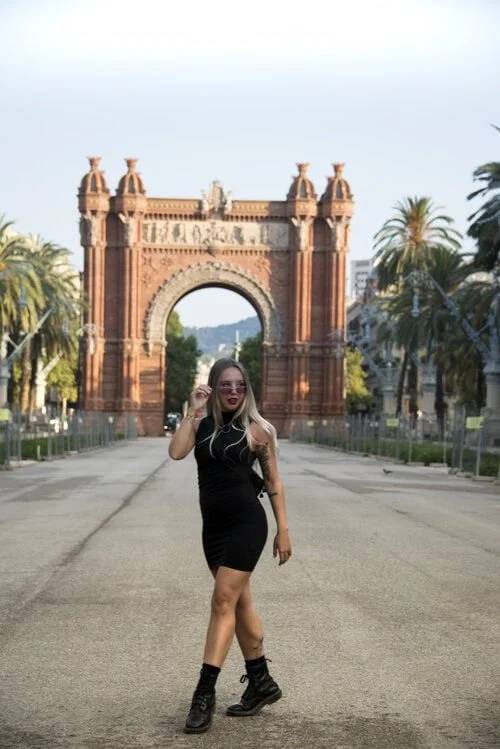
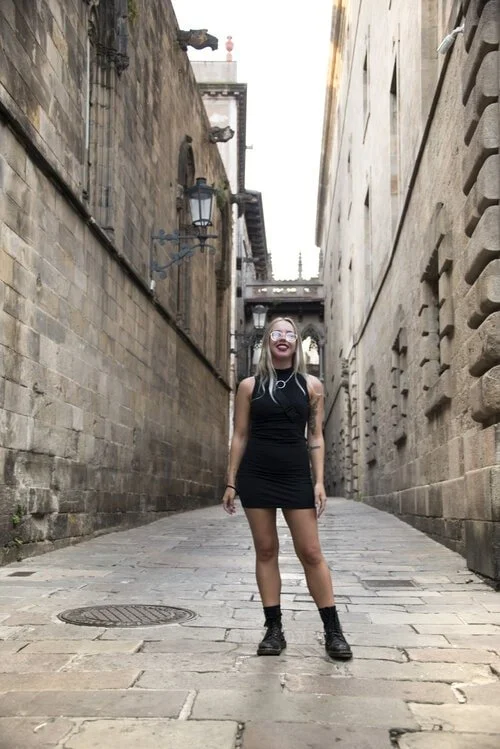
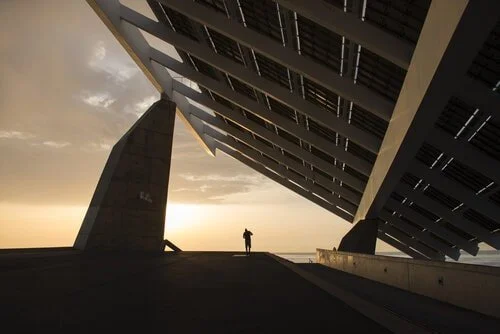

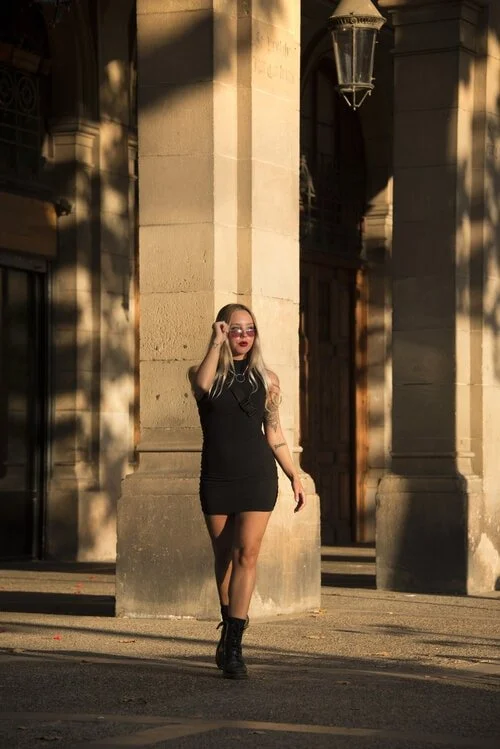
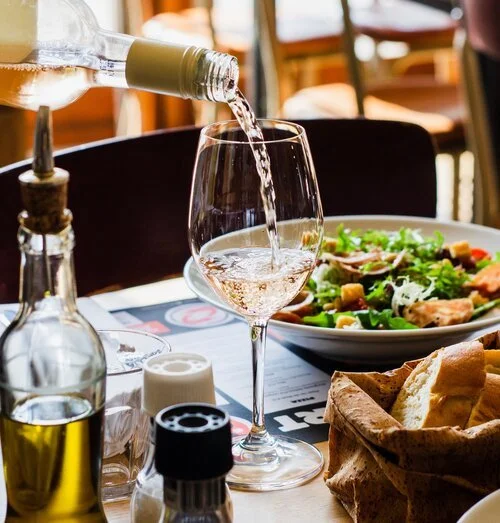
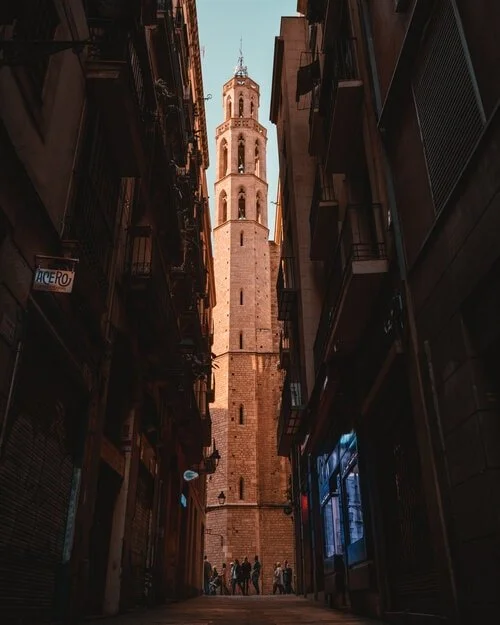
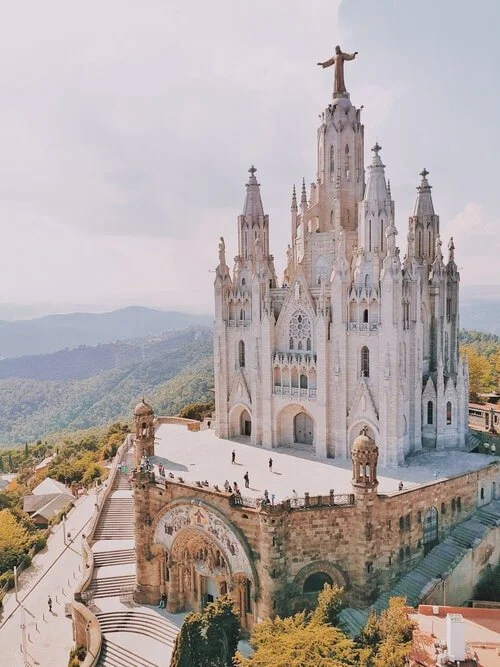
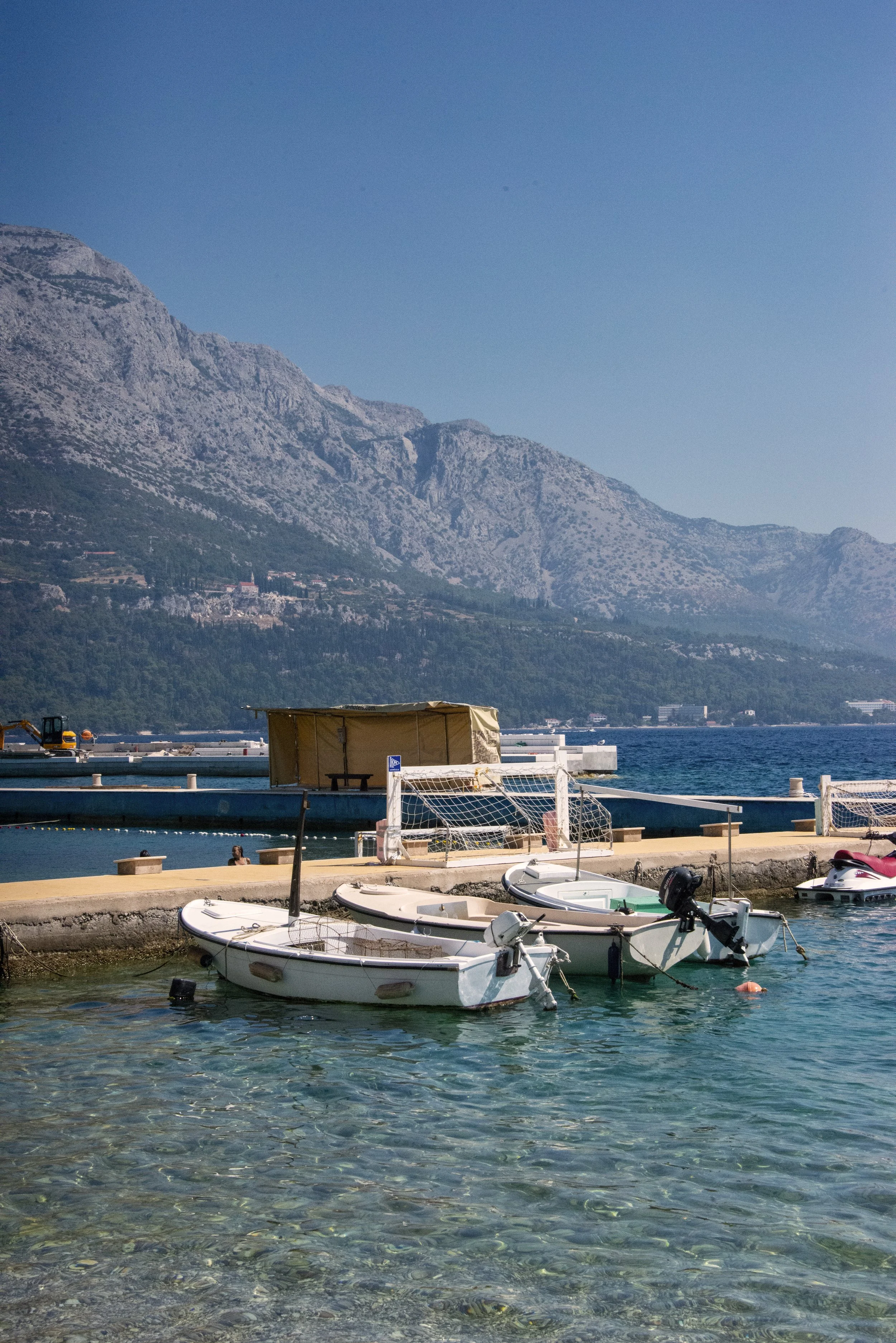
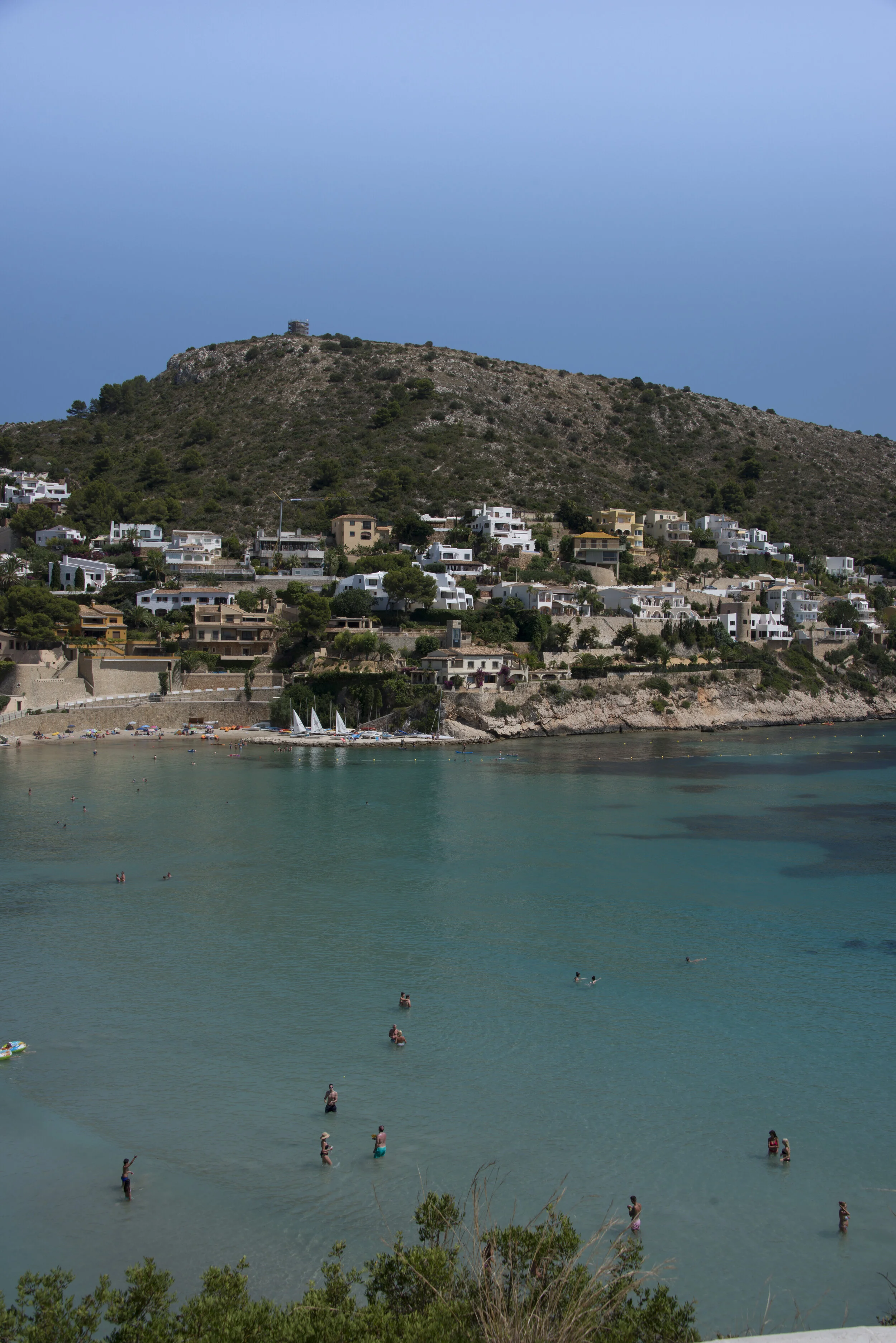







Situated at the foothills of the Sierra Nevada mountain range, this city boasts something for adventure, architecture and nature lovers alike. From the ancient Alhambra Complex to the saline white streets of Albacín, this Spanish city is steeped deep in charm. If you’re wondering how to plan a trip to Granada, look no further!